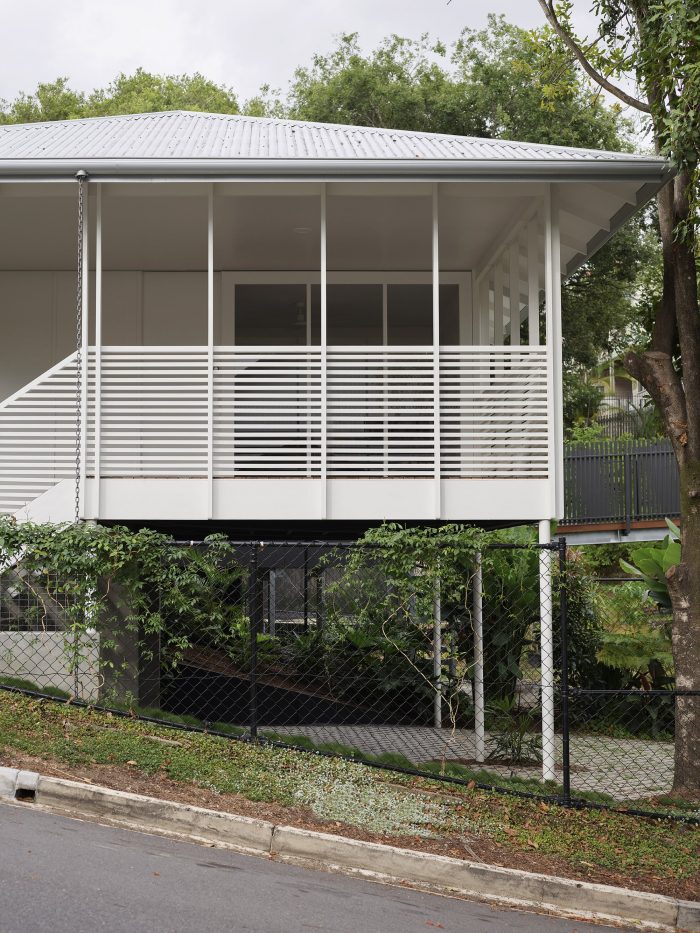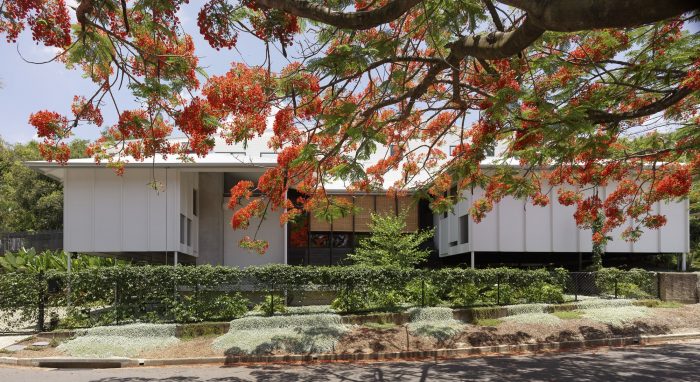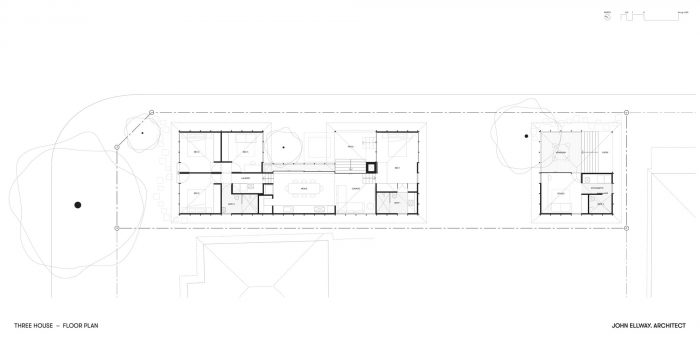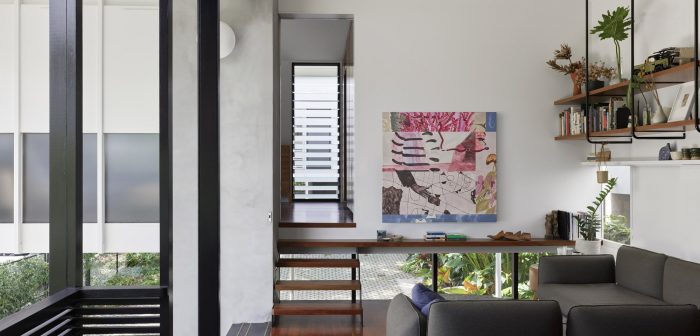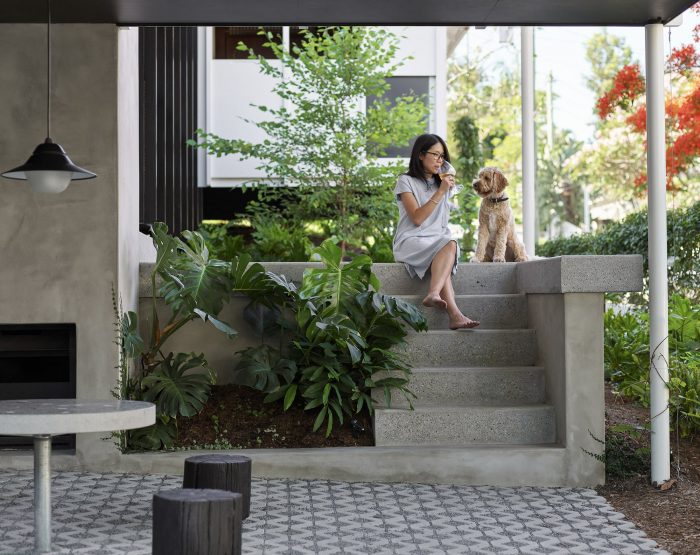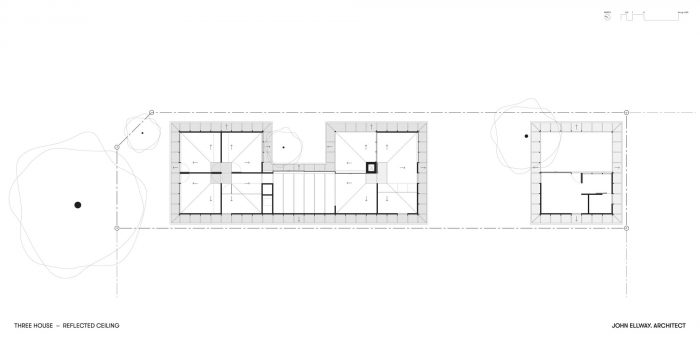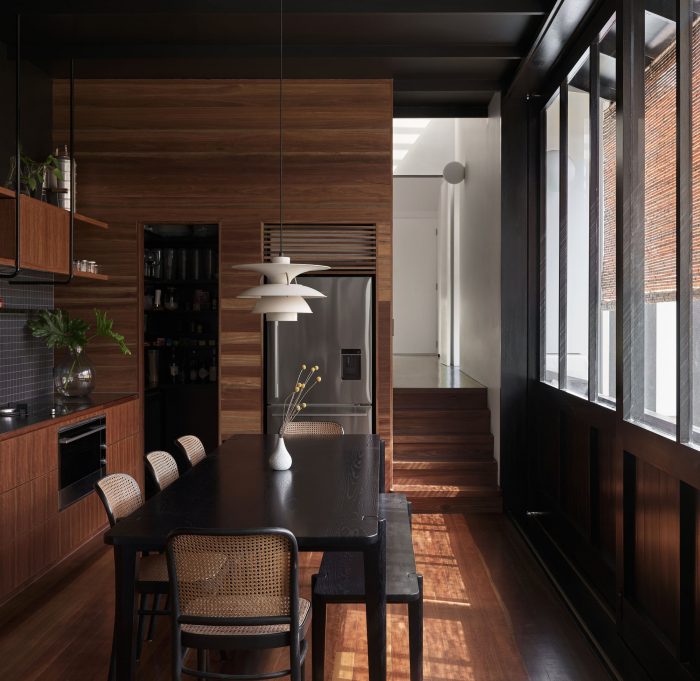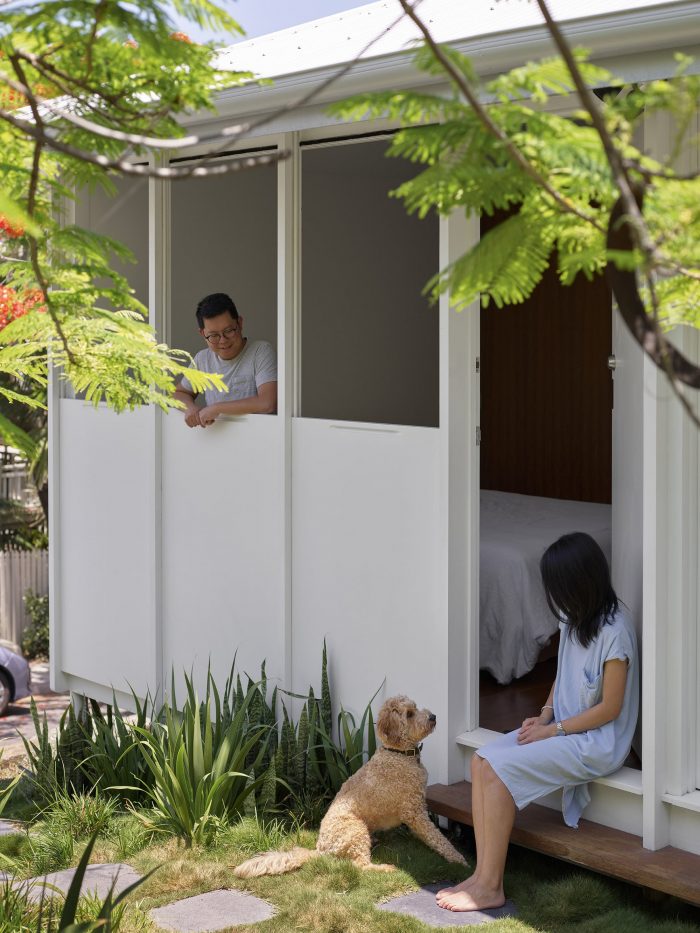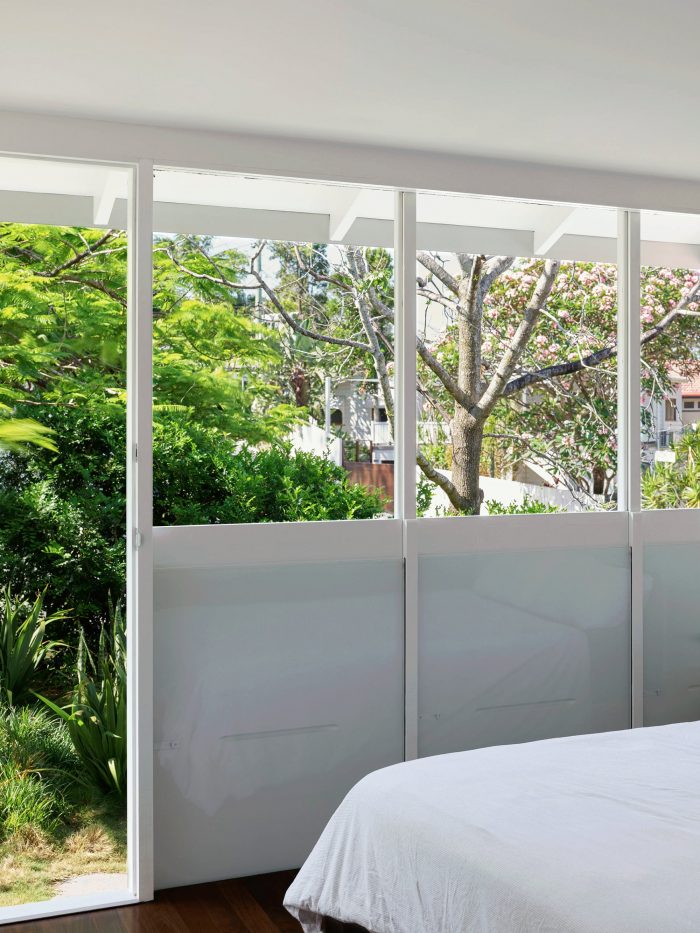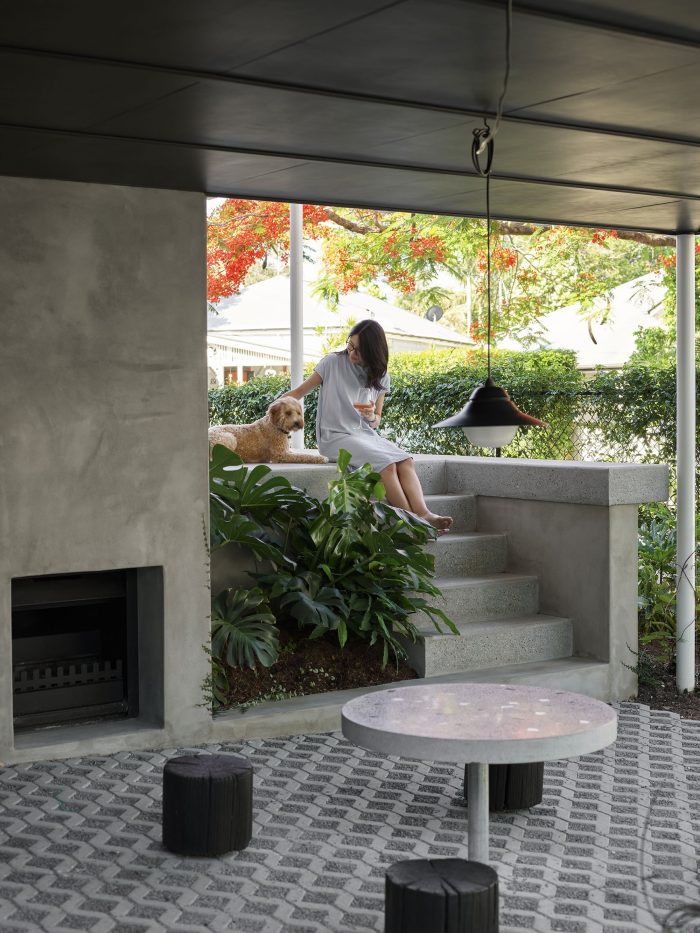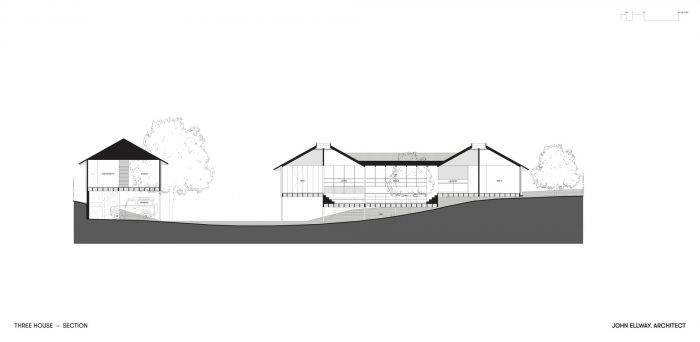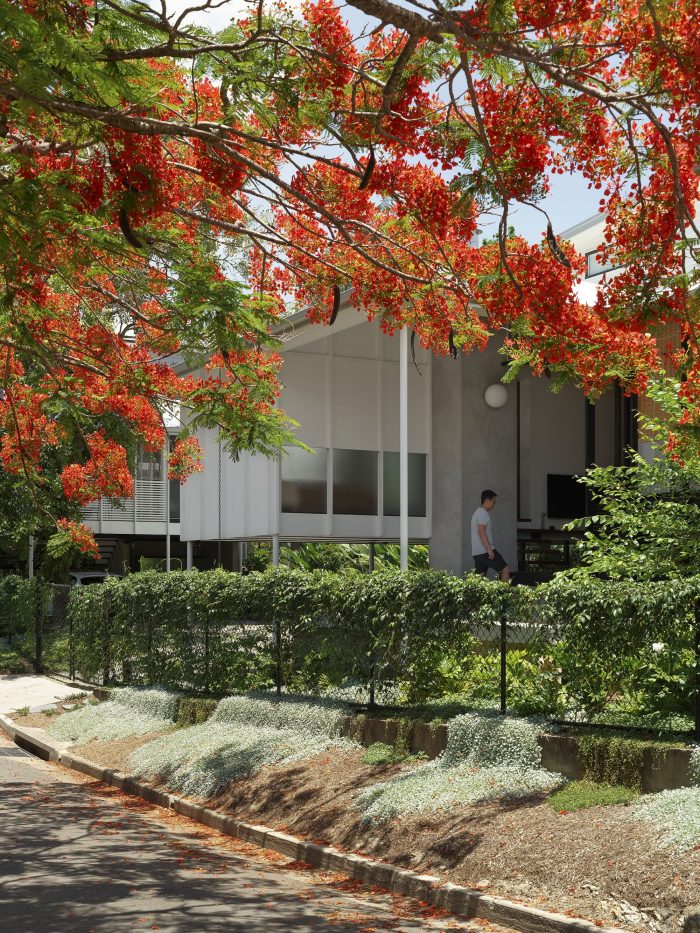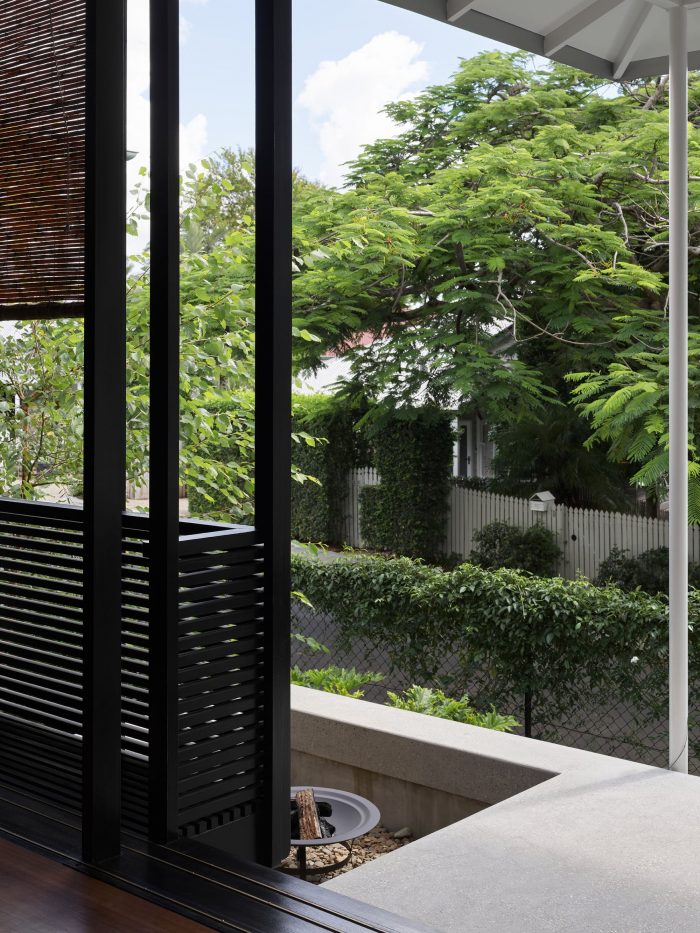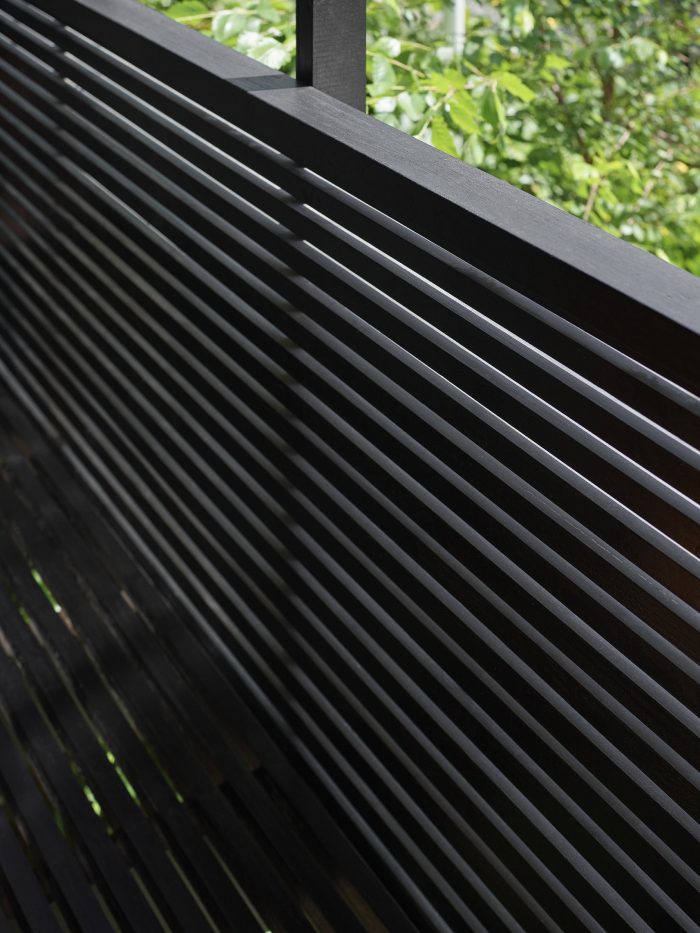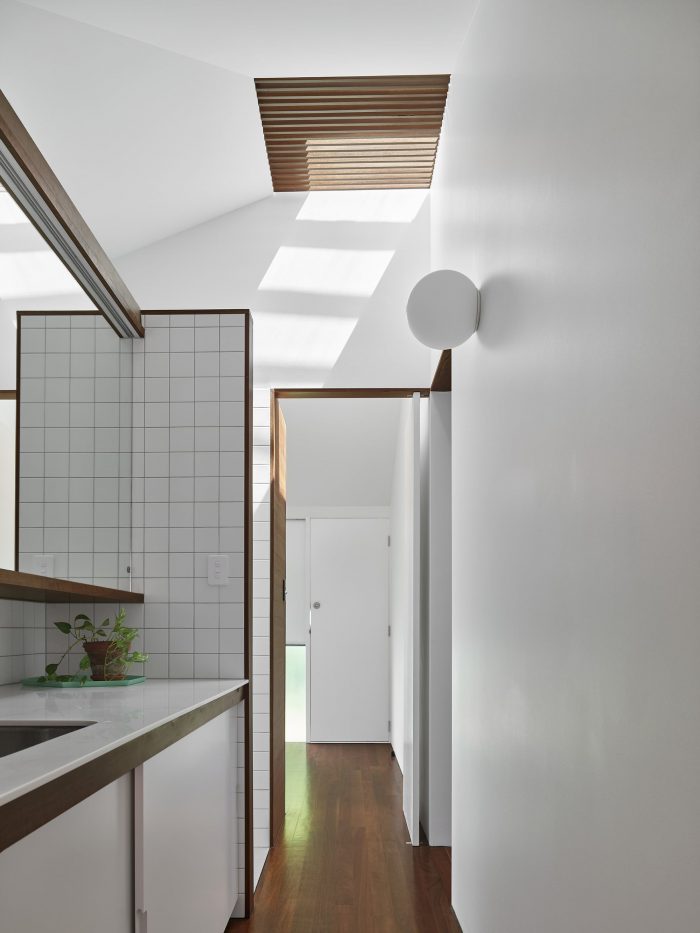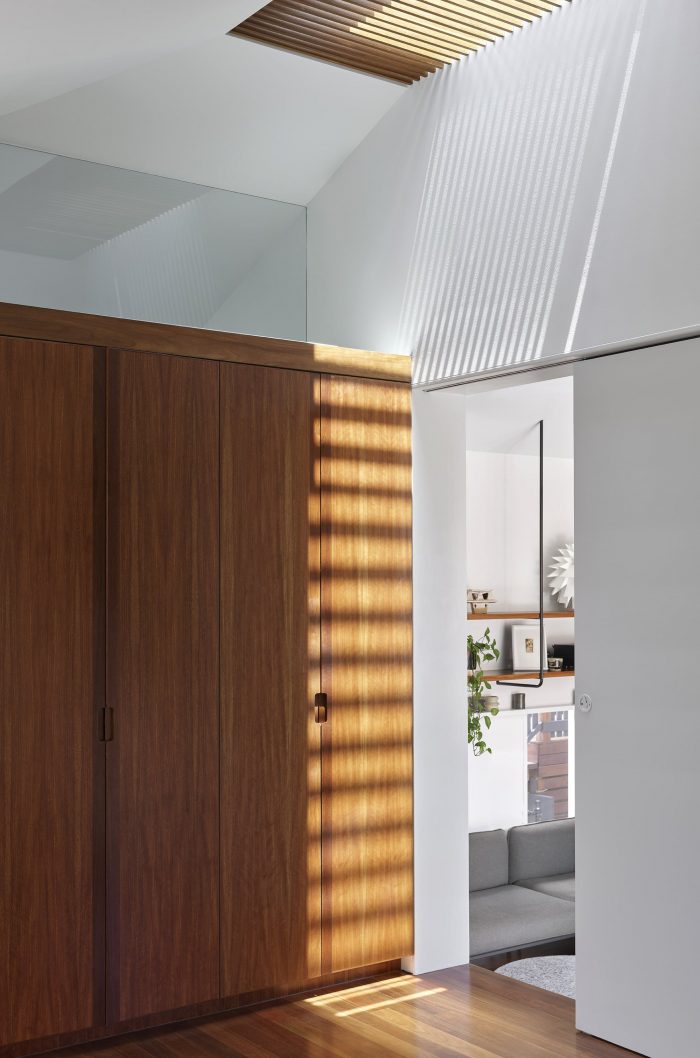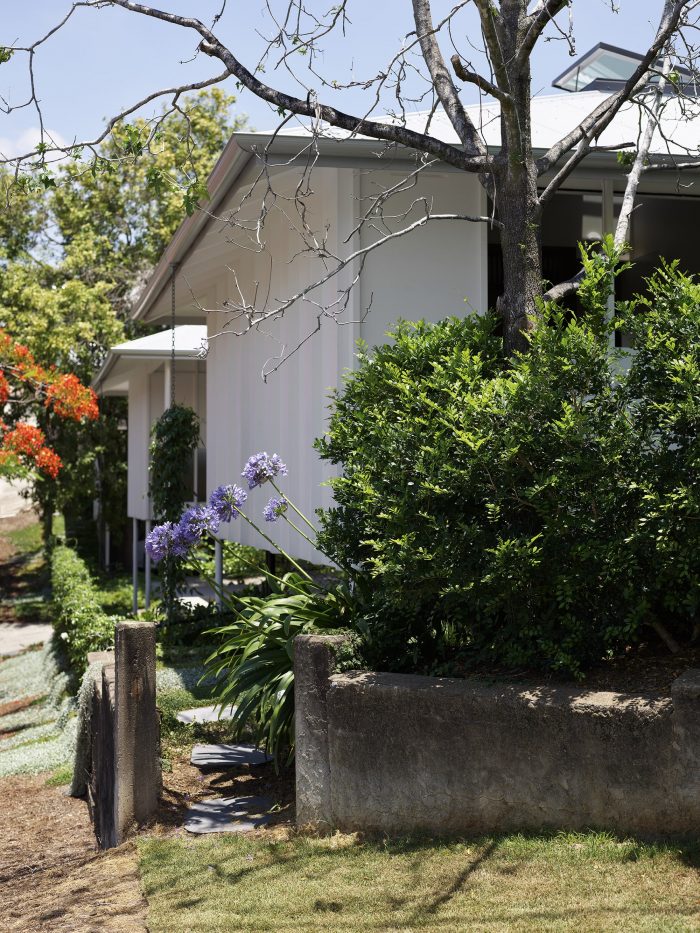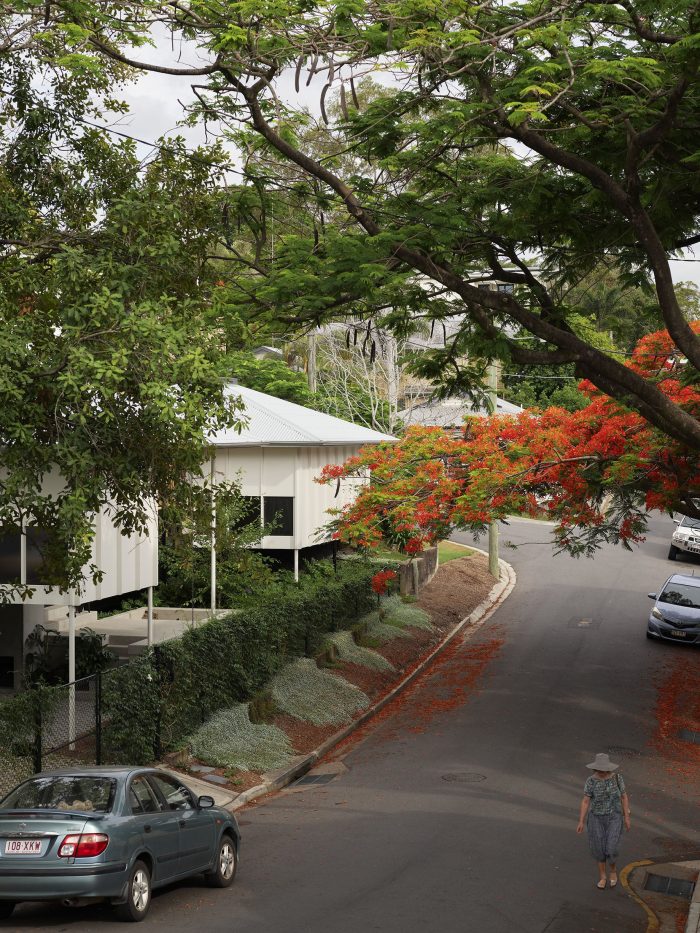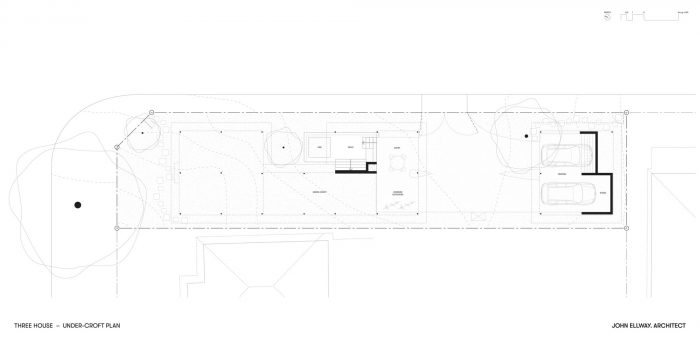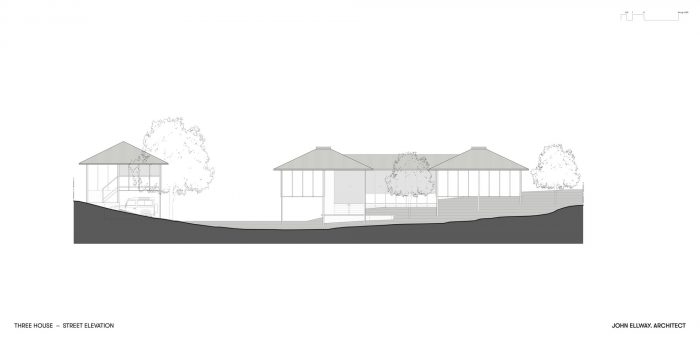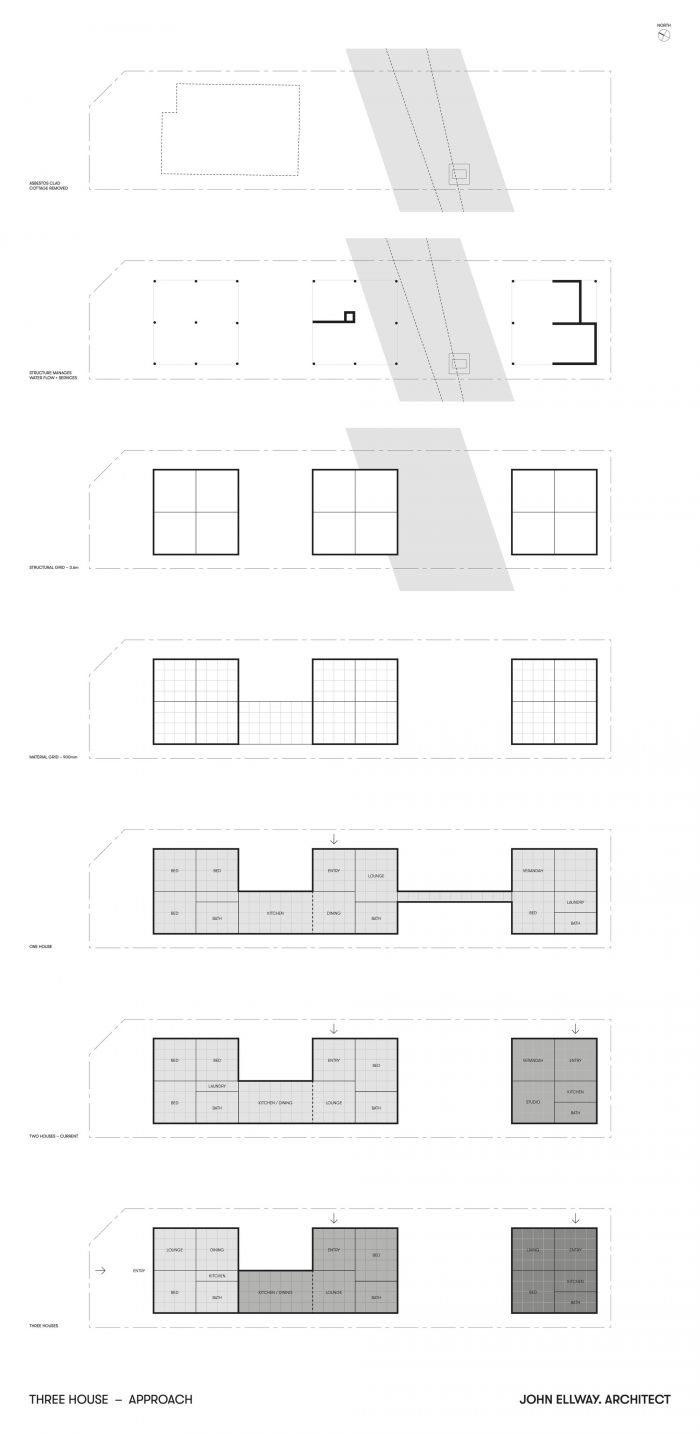除了客户简报和务实的现场条件,我倾向于将旅行作为灵感和我的工作先例研究的来源进行反思。
2017年初,在开始这个项目前不久,我去了槟城。这个位于马来西亚西北海岸的小岛。Boon和Sarah,我的客户,在槟城长大和上学,这里是他们父母目前的家。首都乔治市是许多种族和宗教的交汇点,它以其独特的街头食品而被誉为马来西亚的美食之都。博恩和莎拉热爱食物,并在项目中用他们在槟城的典型成长经历的罐装食品来诱惑我。制作和食用食物,以及为他们的父母提供一个可以长期居住的地方,是他们项目的关键。
Beyond the client brief and pragmatic site conditions, I tend to reflect on travel as inspiration and a source of precedent studies for my work.
In early 2017, shortly before beginning this project, I traveled to Penang. The small island off the northwest coast of Malaysia. Boon & Sarah, my clients, grew up and were schooled in Penang and it is the current home of both their parents. George Town, its capital, is the is a meeting point of many ethnicities and religions that arrived on its shores gaining a reputation as Malaysia’s gastronomic capital for its distinct street food. Boon & Sarah love food and would tempt me through the project with jars of treats, typical of their upbringing in Penang. Making and eating food, as well as a place for both of their parents to stay for long periods, was key to their brief.
他们的新家位于布里斯班市内的帕丁顿郊区,这给他们带来了许多实际的挑战。与该市大部分地区一样,帕丁顿的丘陵地形在雨天会将大量的水引入沟渠。这个场地横跨这些低点之一,有一个指定的建筑禁区。水的上流、地下污水和雨水都流经转角地段的中心。有一个最低的可居住的楼层来躲避水流,并有一个严格的邻里视觉特征准则需要遵守。它超出了当地委员会的正常特征规范,规定了屋顶形状、阳台位置和轻质木材的使用。
The location of their new home in the inner-city Brisbane suburb of Paddington brought with it a number of pragmatic challenges. Like much of the city, Paddington’s hilly terrain funnels large volumes of water down gullies in rainy weather. This site straddled one of these low points with a designated exclusion zone for building over. Overland flow of water, underground sewer, and stormwater all run through the center of the corner lot. There was a minimum habitable floor level to escape the flow of water and a strict neighborhood visual character code to abide by. A step beyond the normal character code of the local council it specified the roof shape, verandah position, and use of lightweight timber detailing.
我们决定拆除现有的战后石棉衬里的平房,以便更好地利用场地的长度,并为雨水和公共设施的体积排除区导航。通常情况下,人们可能会期望这栋房子向下阶梯,与后院相连,以便与地面相接。高于内河流区的最低楼层高度意味着这是不可能的。房子沿着场地的长度被分割成三个方形的亭子,每个亭子都坐在高跷上,形成一个高架平台,就像城市中许多战前的平房。这种分离使得阳光可以被捕捉到计划的更深处,房子下面的空间可以用来停放汽车或作为有盖的户外娱乐区。
The decision was made to remove the existing post-war asbestos-lined cottage so as to better utilize the length of the site and navigate the volumetric exclusion zone for stormwater and utilities. Typically, one might expect this house to step down and connect to the backyard so as to meet the ground. The minimum floor height above the overland flow zone meant that this wasn’t possible. The house was split into three square pavilions along the length of the site, each sitting on stilts to create an elevated platform like many pre-war cottages in the city. This separation allowed the sun to be captured deeper into the length of the plan and the spaces below the house to be used for car parking or covered outdoor entertaining areas.
这些亭子成为房子中最私密的部分,卧室和浴室,位于场地的最高层。然后,一个长方形的生活区往下走900毫米,在相邻的私人空间之间架起桥梁。作为房子的公共空间,它包含了更高的天花板,更丰富的材料和细节。推拉门打开整个宽度,使它感觉像一个外部阳台。这里是烹饪、放松和娱乐的地方。一个有盖的入口天井和火坑位于较低的位置,再次向下延伸到下面的后院,从房子的中心创造了一个视觉连接。从院子到生活区再到卧室的旅程被打破了,所以你不会感觉到你已经爬上了一个永无止境的阶梯。
These pavilions become the most private parts of the house, bedrooms & bathrooms, sitting at the highest level on the site. A rectangular living area then steps 900mm lower, bridging between the adjacent private spaces. As the more public room of the house, it contains a taller ceiling, richer materials, and detailing. Sliding doors open the full width making it feel like an external verandah. This is where cooking, relaxing, and entertaining happening. A covered entry patio and fire pit sit lower again stepping down to the backyard below creating a visual connection from the center of the house. The journey from yard to living area and then bedrooms is broken up, so you don’t feel like you have climbed a single never-ending flight of stairs.
第三个亭子坐落在内陆流区的远处。它目前的用途是为布恩和莎拉的来访家人提供第二居所或 “奶奶公寓”。近在咫尺,却又远在天边! 它的入口远离房子的主要部分,有自己的大门和街道的地址。随着时间的推移,我们设想这个空间可以不断发展,也许可以作为爱好的工作室;单独出租;或者成为主屋的一部分,未来可以增加一条连接的走道,连接到规划的中轴线上。
A third pavilion sits on the far side of the overland flow zone. Its current use is a secondary dwelling or ‘granny flat’ for Boon & Sarah’s visiting family. Close, but just far enough away! Its entry faces away from the main part of the house with its own gate and address to the street. Over time it is envisaged this space could evolve, perhaps as a studio for hobbies; rented separately; or become part of the main house with a future linking walkway that could be added connecting down the central axis of the plan.
这些多种用途显示了这个房子的一个更大的想法,也是我在所有工作中考虑的问题。随着时间的推移,它是如何适应的?未来新的主人在使用上会有什么变化?如果发挥到极致,这所房子可以被分成三个单间住宅,每个都有一个街道地址。婆婆屋 “是第一间。目前的主卧室和连接的生活空间为第二间。而目前面向相邻街道的三床亭子则被重新配置,使洗衣房成为厨房,三间卧室中的两间成为用餐和生活空间。这可以通过在通往厨房尽头的楼梯处增加一堵墙来实现。
These multiple uses show one of the bigger ideas of this house and something I consider in all my work. How does it adapt over time? What are the changes in use with new owners in the future? Taken to the extreme, the house can be split into three single-bedroom dwellings, each with a street address. The ‘granny flat’ is the first. The current main bedroom and linking living space as the second. And the current three-bed pavilion facing the adjacent street was reconfigured such that the laundry becomes the kitchen and two of the three bedrooms become dining and living spaces. This can occur simply by adding a wall at the stairs leading off the end of the kitchen.
在结构上,三个正方形亭子中的每一个都被分解成一个3.6米的结构网格,每个角落都有钢柱支撑着离地的地板。利用土地的布局和将最高的楼层与地面相连的砌块壁炉,取消了钢制横撑。这个3.6米的网格被进一步分解成900毫米的材料网格,以便使用独立尺寸的覆层和门部件。
Structurally each of the three square pavilions is broken down into a 3.6m structural grid with steel posts in each corner supporting the floor off the ground. Steel cross braces have been eliminated using the lay of the land and a blockwork fireplace that ties the tallest floor to the ground. This 3.6m grid is broken down further into a 900mm material grid so as to use stand-sized cladding and door components.
整个房子使用了四种重复的墙壁和窗户开口细节。推拉门;实心墙;百叶窗;以及一个定制的实心窗,可以在下面的纹理玻璃板上滑动。这种窗扇使每间卧室在打开时都有一种阳台的感觉。当你上下滑动面板时,可以控制隐私的程度,坐在螺旋平衡器上的任何位置,都可以进行平衡。斑驳的光线通过刷在下部纹理玻璃表面的景观照进房间。花园照明在夜间通过玻璃巧妙地照亮这些房间。
Four repeating wall and window opening details are used throughout the house. Sliding doors; solid walls; louver windows; and a custom solid sash window that slides over a textured glass panel below. This sash window enables each bedroom to feel like a verandah when open. The level of privacy can be controlled as you slide the panel up and down, sitting in any position counterweighted on spiral balancers. Dappled light shines into the room through a landscape that brushes against the lower textured glass surface. Garden lighting subtly lights these rooms though the glass at night.
房子上方有三个金字塔形的屋顶形式。附近的特征规则,鼓励这种屋顶类型与相邻的别墅相匹配,被用来作为一个积极的约束。在每个屋顶的顶点是一个太阳能可操作的天窗,它是自动的。打开和关闭以排出热空气,并通过周边的窗户吸引微风。内部天花板是倾斜的,以配合上面的屋顶,增加卧室的空间感。这座房子的面积相当适中。内部面积为136平方米,相邻的有盖天井+阳台的空间为61平方米。
Above the house sits three pyramid-shaped roof forms. The neighborhood character rules, which encourage this roof type to match adjacent cottages, are used as a positive constraint. At the peak of each roof is a solar-powered operable skylight which is automated. Opening and shutting to vent hot air and draw breezes through the perimeter windows. The internal ceiling is raked to match the roof above increasing the feeling of space in the bedrooms. The house is fairly modest in size. 136m2 internally, with 61m2 of adjacent covered patio + verandah spaces.
Architects: JOHN ELLWAY. ARCHITECT
Area : 197 m²
Year : 2020
Photographs :Toby Scott
Lead Architect : John Ellway
Builder : PJL Projects
Engineering : Westera Partners
Landscape : Studio Terrain
Energy : Esco Energy Solutions
City : Brisbane QLD, Australia
Country : Australia


